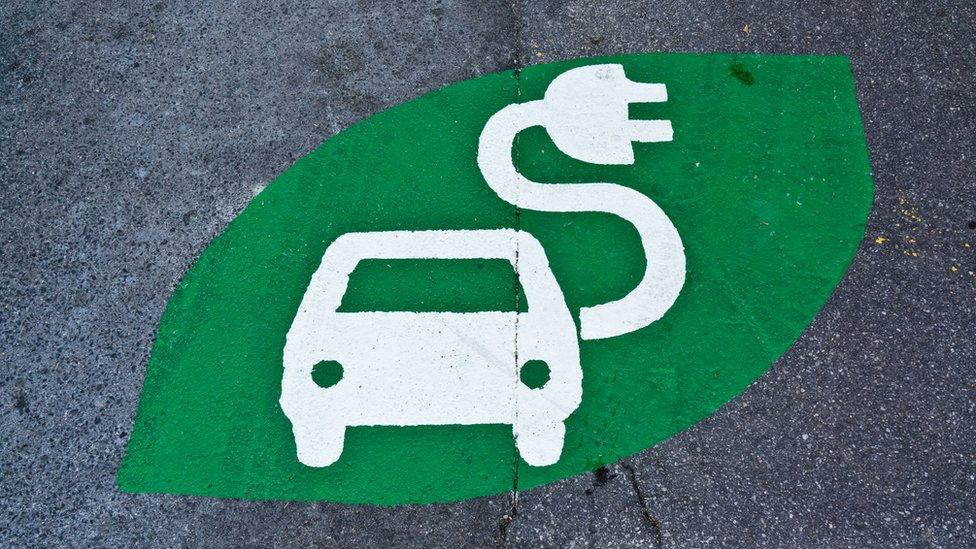We're driving to an electric future, but how do we keep the kettle on?
- Published
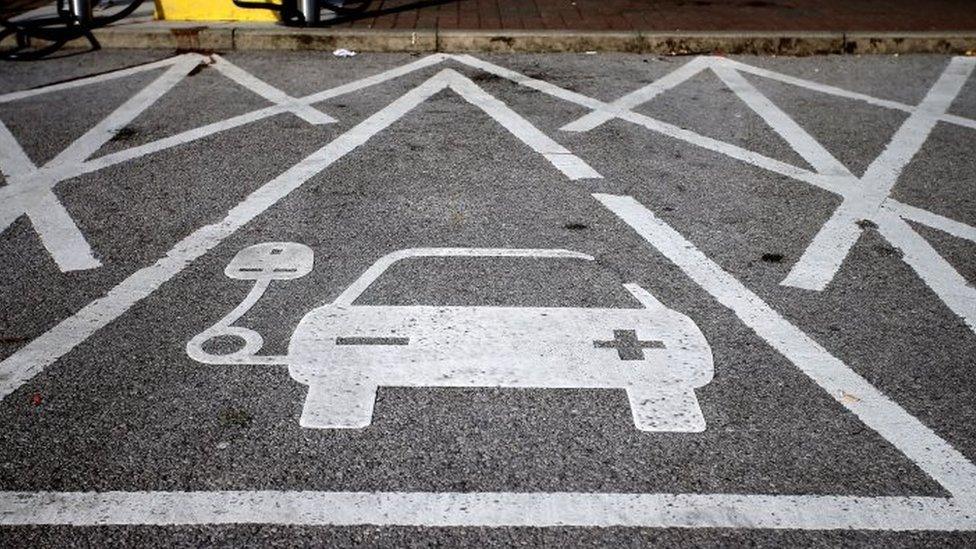
Electric vehicles are now a reality, but boiling a kettle at the same time as charging your car may not be, according to insights published by the National Grid, external.
In July, the government announced that all sales of new petrol and diesel cars in the UK will cease by 2040. Volvo, meanwhile, has said every vehicle it launches from 2019 will have an electric motor.
The National Grid predicts that by 2050, there could be up to 26 million electric vehicles (EVs) on the road in the UK.
They'll all need charging regularly if we're to stay on the move, so how might our homes, roads and forecourts adapt to this exhaust-free future?
Do we have enough electricity?
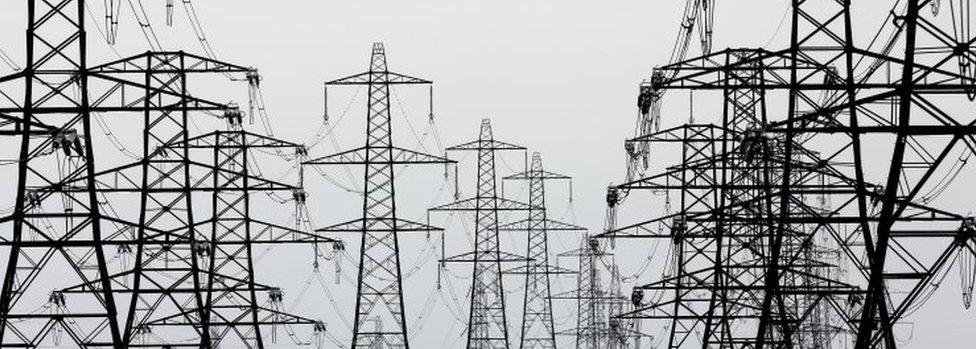
The short answer from the National Grid is yes.
How you access that electricity is what requires some thinking.
A top-of-the-range electric car will have a battery capacity of 90kWh. Using an average sized charger (3.5kW) it would take around 19 hours to go from 25% to fully charged.
That's a long time to wait to nip to the shops, but charging time can be cut dramatically by using a larger charger - ideally, you'd plug in something hefty with up to 50kW to reduce the time to about 80 minutes.
However, chargers that big aren't suitable for an average home - a more likely option would be a charger of about 11kW, (although many EV owners today also use 7kW chargers).
A typical home is fitted with a main fuse of 60-80 amps, and the National Grid points out that an 11kW car charger would require 48 amps.
According to the National Grid, that means using a kettle, oven or immersion heater during charging would cause the main fuse to trip.
So no cuppa while you wait?
Well, one solution could be to increase the amperage of your main fuse.
Only the distribution network operators can do this - as opposed to an electrician or your supplier - and the cost can vary depending on the age of a property.
With a 100 amp fuse, a 22kW charger could be used which would have a faster charge time of around three hours.
This would, however, still require all other electrical appliances in the house to be turned off during charging.
What if you don't have a permanent parking space?
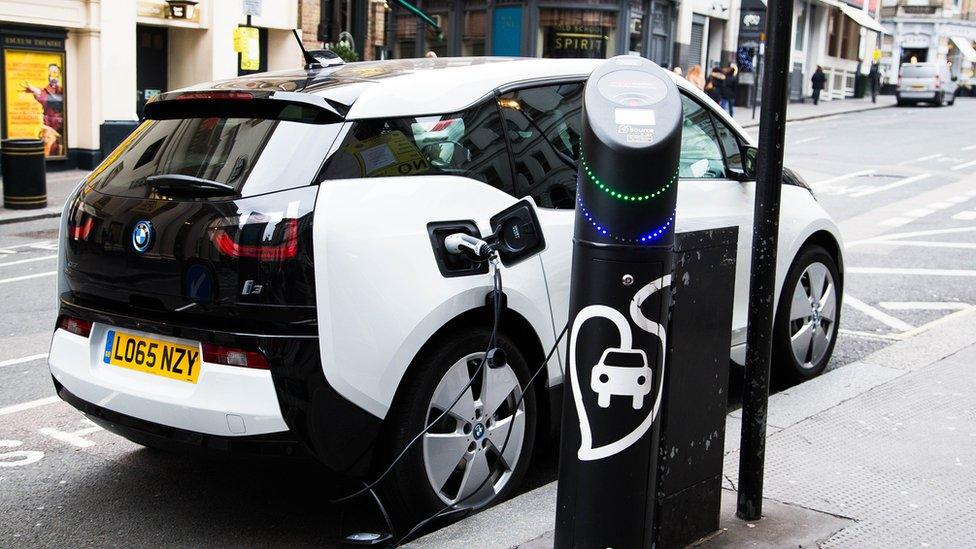
The National Grid predicts that by 2050, if there are 20 million electric cars on the road, about 8.5 million of them will not have the facilities to charge at home.
And for the aforementioned reasons - primarily the need for a cuppa or a hot bath - home charging won't always be the preferred option.
There are currently more than 4,700 locations with charging points around the UK, according to website Zap-Map.com, external.
New locations are being added daily - with an increase of 480 in the past 30 days alone.
This trend looks set to continue, with petrol stations and motorway services due to be made to install charge points, under the government's Automated and Electric Vehicles Bill.
Electric charging company Ubitricity has begun installing charge points in adapted lamp posts, external in parts of London.
The posts are fitted with with a charging point which uses the electricity source for the lamp.
This provides on-street parking for electric car users - and uses an established electricity network.
Ubitricity argues it reduces the cost of installing an electric charging point by 90%. The company charges 13p per killowatt hour.
Suppliers such as Ecotricity - who currently have 300 "pumps" in the UK - also offer faster charging points. And car manufacturers themselves are working together to create charging networks.
Smart charging, which intelligently controls when vehicles draw electricity from the grid to avoid peaks and troughs, is one way of managing consumption.
This will be vital, according to think tank Green Alliance, who are warning of potential localised "brown-outs", external - a drop in voltage of supply - in wealthier areas where initial electric vehicle take-up will be higher.
It cites an example of "responsive charging" in California, where internet connected chargers respond to signals by reducing or cutting off car charging if the grid is unstable.
What might the electric future look like?

Petrol forecourts could be transformed into super charging stations
The National Grid has set out how it thinks the UK's infrastructure could be reconfigured to cope with a world in which almost all cars will be electric.
We could see:
Super chargers: A 350kW charger would take less than five minutes to charge the average electric car of today, mimicking the fuelling time consumers are used to on conventional forecourts. Current batteries, however, cannot support this level of charging.
Strategically-placed charging points: While the focus is likely to remain on reducing charging times, the National Grid concedes that lengthy charges will only be acceptable if there are other activities, like shopping, which drivers could do while they wait.
High powered forecourts: In order to support vehicles that can travel long distances, "a few thousand" super charging stations of more than 3MW each could be required. That's equivalent to 1,000 homes' energy supply, per station, according to industry regulator Ofgem.
- Published22 August 2017
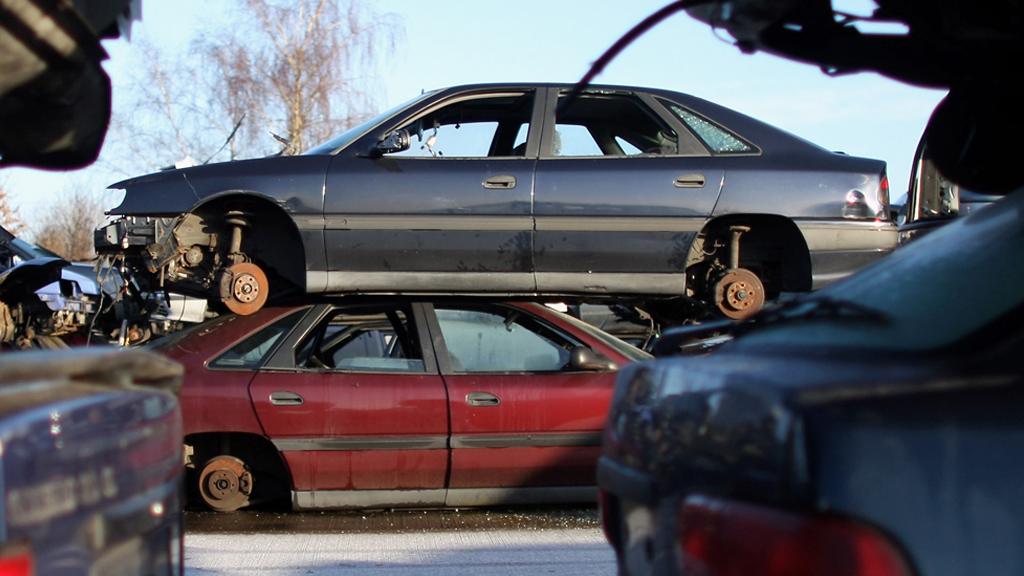
- Published3 July 2017

- Published3 April 2017
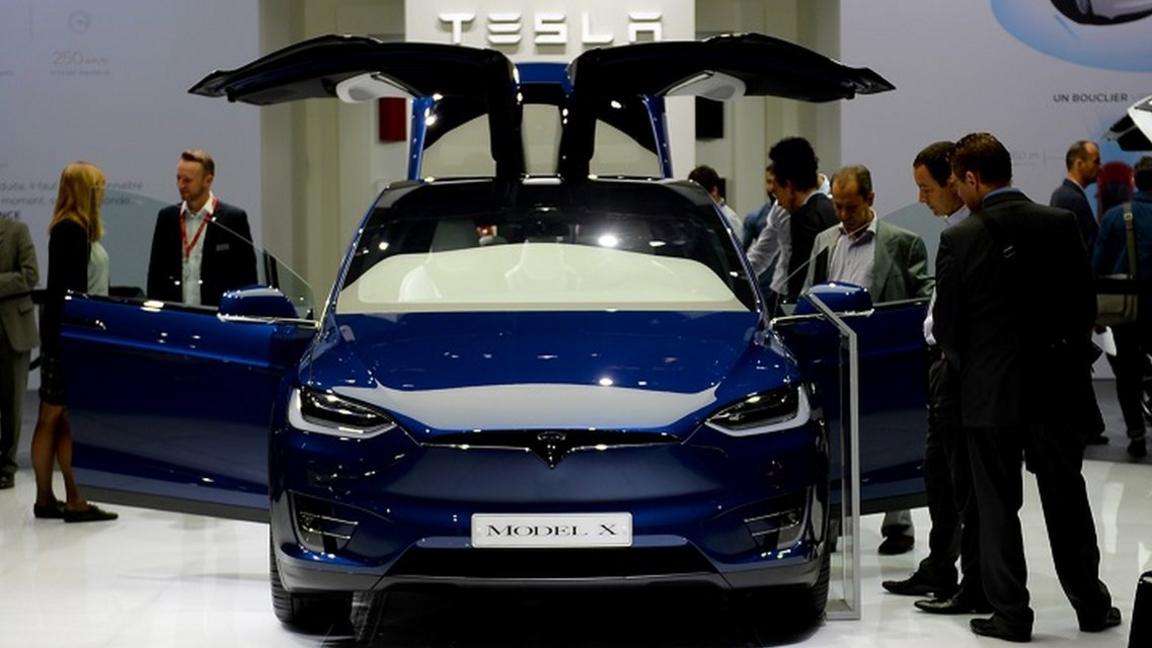
- Published29 November 2016
